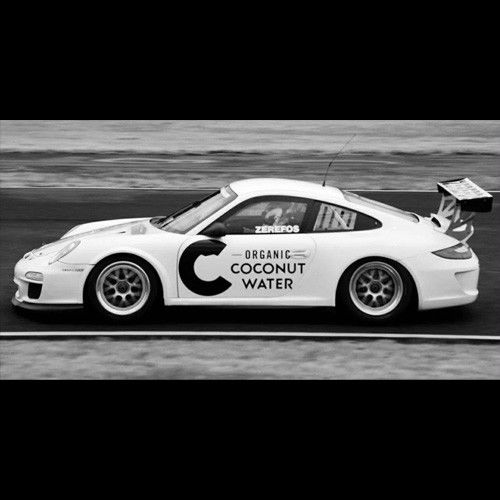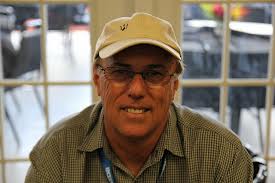

Like his dad, Geoff Brabham was born in Sydney, but unlike his dad he chose not to follow a career in grand prix racing.
As the eldest of Sir Jack Brabham’s three boys, Geoffrey had honed his skills behind the wheel of a Formula Ford before he rose to collect his first big Championship, the Australian F2 title in 1975.
There would be however no pathway to the World F1 Championship, a height scaled three times by his legendary dad in 1959, 1960 and 1966.
Instead Geoff Brabham had stints in England in various formula cars including the short-lived and often forgotten British F1 Series.
However it was America where Geoff established a decent professional career in Can-Am, IndyCar and IMSA.
The later is where he enjoyed the bulk of his success winning the IMSA GTP Championship in an unbroken run from 1988-1991 after he spent much of the 1980’s in IndyCar racing with various teams including VDS, Galles and Kraco and some other forgettable brushes with lesser teams.
In 1983 Brabham came the closest any Australian had come to winning the Indianapolis 500 when he finished fourth behind Tom Sneva, Al Unser and Rick Mears.
Even though Brabham had shown all the qualities necessary to become a winner in IndyCar during one of the sport’s most competitive eras, he could not quite position himself with the right team at the right time.
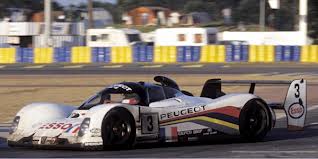
Still, there were just rewards around the corner firstly with the IMSA Nissan program and then in 1993 when he won the world’s greatest sports car race – the Le Mans 24-hour – in a V10 Peugeot alongside French drivers Christophe Bouchut and Eric Helary.
In golfing or tennis speak, Le Mans is a motor racing major, the twice-around-the-clock marathon seen as one of few truly great auto races of the world.
“If I was judging on one race then, yes, Le Mans definitely would be the highlight of my career,” Brabham said.
But there was more to Le Mans in 1993 than simply winning. At this time when the heartbeat of world sports car racing was at its sweetest, Brabham was to be the recipient of a great honour orchestrated by the then team boss Jean Todt.
“For me it was special because Jean Todt actually took me out of the rotation and had me in the car when we crossed the finish line. To me that made it even more special than what it really was.”
An Aussie in a French car in front of a French crowd with two French co-drivers bestowed the honour of taking the checkered flag was a big deal.
Whether or not the 13.6km long circuit which has 38 turns is Brabham’s favourite is probably not the discussion point many readers may have pined for. There is simply not a yes or no answer.
“It would have been if it was a two-hour race but it wasn’t much fun doing it for 24 hours,” Brabham starts.
“Look I enjoyed Le Mans but I didn’t really have any favourite tracks. For me if I enjoyed going to a racetrack it was more to do with if I woke up in the morning and I had a chance to win then I enjoyed it.
“It didn’t really matter where it was. Le Mans is so long but it had some good corners and was technical as well as plenty of areas to rest. So look I enjoyed it but whether it was my favourite, I just didn’t really have a favourite.”
However Le Mans with all of its mystique and charm at a place which was the birthplace of grand prix racing is not Indianapolis – although La Sarthe does name a corner after the famous Brickyard oval.
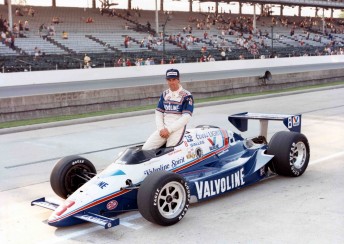
Indianapolis, or more specifically the Indy 500, is the race Brabham would still give his eye-teeth to have won.
“I probably should have finished second at Indy in 1983 instead of fourth,” Brabham, now 60, comments.
“As far as I was concerned Indy was ‘the race’. If there was one race that I would sacrifice a lot in my life and my career just to say I won the Indy 500 I would do so.
“To me it was the one race I just desperately wanted to try and win. I never got that opportunity. In my era and what I was doing that was the big one.”
Unsurprisingly Brabham has nominated the Nissan and the Le Mans-winning Peugeot as the best competition cars he has driven.
“The IndyCars I did, it was great to race in however I felt I never got with the right team and it was particularly frustrating,” Brabham says.
“The Nissan stands out because we had won so many races with it. I really felt at one with that car. I had a feeling of every time I drove it that it was almost indestructible.
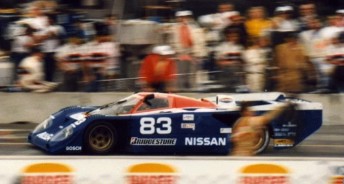
“If I had to pick one particular Nissan it was the car that we won the Championship in 1988. We won eight races in a row which was an American record at the time.
“All up I don’t know but I probably won almost 20 races with the Nissans.”
Around the time Michael Andretti was still on his L-plates in IndyCar in the early part of the 1980’s and his dad Mario and another great F1 champion Emerson Fittipaldi helped give the series massive international appeal, Brabham had without a doubt his greatest escape.
“The greatest escape I had was when I didn’t actually have the accident,” Brabham recalled.
“I was running an IndyCar at Pocono and when I came off the last turn the steering column came off the rack.
“With an IndyCar with the stagger if you take your hands off the wheel they turn left.
“I came off the corner and all of a sudden the car just took off toward the pit wall. We were running over 200mph (320km/h).
“Don’t ask me why I did this (but) I just went bang with my hands onto the steering wheel and it actually went back onto the spline and I just managed to miss the pit wall.
“If it had have happened going into the corner I would have had the biggest accident you would have ever imagined.”
That incident, a close call that potentially could have had fatal consequences danced around Brabham’s mind for quite a while afterwards.
“Unfortunately as a race driver sometimes you’re not in control of your own destiny,” Brabham explains.
“I was desperate to stay in IndyCars and it turned out I didn’t have confidence in the team and there were quite a few things going wrong. It’s kind of a long story.
“Sometimes you just don’t feel comfortable and I was in that situation. The incident at Pocono happened and then you loose faith in everything.
“I was just lucky I could kiss the ground and still walk at the end of it.”
Brabham’s career spanned several decades at the top and he raced against some of the finest Indy and sports car races of all time. His views on who he classes as his greatest rivals is an interesting snapshot of his time at the cradle of North American motor racing.
“There’s several guys I admire as drivers like Emerson Fittipaldi, Mario Andretti, Michael Andretti and the Unser family,” Brabham started.
“And there’s one guy I really admired a lot in my career and I did actually get to race with him in NASCAR, although not very much, and that was Dale Earnhardt.
“To me he was probably the one guy who I thought was awesome.”
“In IndyCar racing there were a lot of drivers who were oval specialists. Those guys were really, really good on ovals. Guys like Gordon Johncock and Tom Sneva I really looked up to.”
These days Geoff is seeing his son Matthew’s young career blossom and a third generation Brabham continue the racing name abroad.

The 18-year-old Matthew clinched his first major championship this year when he won the USF2000 title, in his Cape Motorsports with Wayne Taylor Racing machine and using his dad’s #83 in the process.
Recently young Matthew was announced as linking with Andretti Autosport, driving the team’s #27 car in the Pro Mazda Championship in 2013. Quite a cool development with the Brabham and Andretti names joining forces.
Geoff Brabham says he has not forced the issue of continuing the Brabham name in racing with Matthew.
“If he wanted to continue in racing then fine. He always said he wants to do it.”
“And that’s fine with me and then you can say you can continue the tradition but it’s not a focus.”


